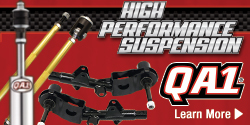I'm not really familiar with both EFI systems you noted. They appear to be TBI (Throttle Body Injection) systems.....adaptations of a GM TBI system used in their middle 70s economy vehicles (Pontiac 6000 4 cylinder engine, etc), rather than a more traditional fuel Injection systems....multi point (all injectors pulsed on simultaneously at 1/N where N = number of cylinders of the engine), sequential port injection system sequence, where the injection program precedes the ignition sequence both were used by Ford, and GM and directed the fuel intake charge behind the intake valve. IMO.....a TBI SYSTEM is not a true fuel Injection system as the fuel charge is delivered via an intake manifold (identical to a carb delivery system) not directly to the intake port, immediately b4 the intake valve opens. .......perhaps someone can enlighten me.......I'm mot to old to learn....... just my thoughts....
BOB RENTON.
















